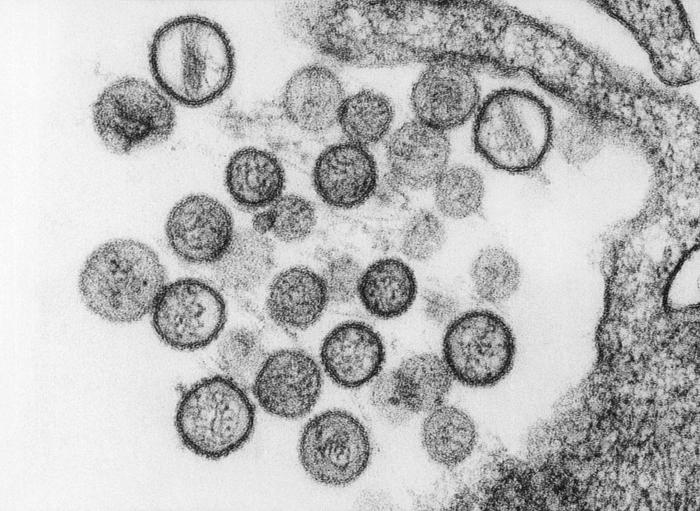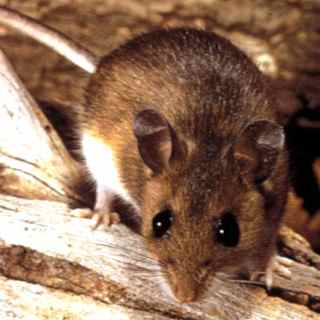
Public Health Insider
Public Health — Seattle & King County
Hantavirus can cause a rare but deadly disease called Hantavirus Pulmonary Syndrome (HPS). In Washington state, hantavirus is spread by deer mice.
Public Health is currently investigating a case in a teenage King County resident. This person was hospitalized in early August and is now recovering. The patient reported being exposed to a mouse infestation at his house in Issaquah and also bitten by a rodent in the woods in a residential area in Issaquah, Washington.
King County cases 1997 – present
Since 1997, there have been six people diagnosed with HPS who were most likely infected in King County. Prior to the current case, the most recent King County case was in December 2021.
While rare in King County, residents should be aware of the risk of hantavirus and know how to identify and properly respond to rodent infestations. Minimizing exposures to rodents, particularly deer mice and their nests is key to prevention.
What animals carry hantavirus?

In Washington state, hantavirus is carried only by deer mice. Deer mice can nest in homes, garages, outbuildings, sheds, cabins, barns, other structures, and cars, and have been reported most typically in wooded rural and suburban settings. A home or building does not need to be old or dilapidated to have nesting rodents.
Deer mice infected with hantavirus appear healthy and do not get sick themselves. In other parts of the U.S., other rodents can also carry the disease. It is not carried by rats or house mice in our region, but it can be difficult to distinguish between types of rodents based on appearance. Deer mice are generally smaller than many other rodents, have large ears, brown or dark gray fur on their heads and backs, white fur on their bellies, legs, and feet as well as a distinctive bi-color tail which is dark on top and white underneath.
How do you become infected with hantavirus?
People typically get infected with hantavirus by breathing in dust containing the virus from rodent droppings, urine, saliva, or nesting materials. Hantavirus spreads when dust that contains the virus is stirred up into the air, such as when people sweep or vacuum in rodent-infested areas.
It is also possible – but less likely – to get infected by touching one’s eyes, nose, or mouth after handling any contaminated rodent materials, or by being bitten by an infected rodent. Hantavirus is not spread person-to-person.
Activities that may place a person at higher risk for hantavirus exposure include:
- Using or cleaning previously unused buildings, cabins, sheds, barns, garages, and storage areas, particularly when they have been closed during the winter or undisturbed for weeks or months.
- Housecleaning activities in and around homes with rodent infestations. See information on safe cleaning in our Hantavirus Fact Sheet and CDC Hantavirus brochure.
- Construction workers, utility workers, campground/park service staff, pest control workers, and others can be exposed when they work in crawl spaces, under houses, in and around cabins, or in vacant buildings that have a rodent population.
- Campers and hikers can be exposed when they use infested trail shelters such as cabins, yurts, or other shelters, or camp in rodent habitats.
- Exposure to cars, trailers, or mobile homes where rodents are living (see specific guidance for cleaning up vehicles).
The chance of being exposed to hantavirus is greatest when people are in closed spaces where rodents are actively living. Take steps to prevent rodent infestations even if you do not see evidence of rodents.
Symptoms of hantavirus infection
Symptoms begin 1-8 weeks after exposure to the virus. Infection with hantavirus typically starts with 3-5 days of illness that is similar to the flu, including fever, sore muscles, headaches, nausea, vomiting, and fatigue. As the disease gets worse, it causes coughing and shortness of breath. People with HPS are usually hospitalized, and about one out of three people diagnosed with HPS die. Although there is no treatment to cure infection, supportive care may be helpful, especially when begun earlier.
If you have been exposed to rodents or rodent-infested buildings and have symptoms, see your doctor immediately and tell them about your possible rodent exposure.
Hantavirus prevention
Keep wild rodents out of your home and workplace by removing their sources of food, water, and shelter. If you do have a rodent infestation, take precautions to safely clean up the area. Detailed information to prevent and clean up rodent infestations is available:
- Public Health’s hantavirus factsheet
- Public Health’s Environmental Health Services
- CDC hantavirus factsheet
Rodent infestations
Public Health Environmental Health Services should be consulted at 206-263-9566 and special precautions are suggested for cleaning homes or buildings where one of the following may be true:
- A heavy rodent infestation including piles of feces, lots of nests or dead rodents
- Vacant structures that have attracted rodents while unoccupied
- A building where another person was infected if that building was not properly cleaned
Public Health recommends hiring professional pest control services in these situations.
Rodent infestations in vehicles
Exposure to rodent-infested vehicles is a possible way to be infected with hantavirus. Signs of rodents include a foul odor, chewed wires or other components under the hood, and visible nesting material and excrement in the vehicle. Follow guidance on cleaning up after rodents in cars.
More information
CDC | Protect Your Family from Hantavirus
CDC | Información sobre los Hantavirus
Washington Department of Health: hantavirus en espanol
CDC | Prevent Hantavirus Pulmonary Syndrome: A guide for tourists, campers, and hikers
WA DOH | Information about Hantavirus in Washington State
Public Health – Seattle & King County | Resources for the General Public
Originally published August 28, 2023


